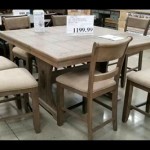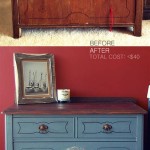Black Mold on Wood Furniture: Identification, Removal, and Prevention
The presence of black mold on wood furniture represents a significant concern, impacting both the structural integrity of the furniture and the health of individuals exposed to it. This article aims to provide a comprehensive overview of black mold on wood furniture, covering its identification, the steps required for its effective removal, and the implementation of preventive measures to mitigate the risk of future growth. Understanding the conditions that foster mold growth and the appropriate remediation techniques is crucial for maintaining a healthy and safe living environment.
Mold, a type of fungus, thrives in damp and humid environments. Wood, being a porous and organic material, provides an ideal substrate for mold growth when exposed to moisture. Black mold, specifically, refers to several species of mold that appear dark in color. While *Stachybotrys chartarum* is often associated with black mold, other species can also exhibit dark pigmentation. The presence of any mold on wood furniture should be addressed promptly to prevent further damage and potential health hazards.
Identifying black mold on wood furniture requires careful observation. While a visual inspection is a primary method, it is important to distinguish mold from other types of discoloration or staining. The characteristic signs of black mold include dark, often slimy or fuzzy patches on the wood surface. These patches may have an irregular shape and can spread over time if left untreated. A musty or earthy odor emanating from the furniture can also indicate the presence of mold.
Differentiating between mold and mildew is also important. Mildew typically appears as a white or grayish powdery substance on surfaces, while mold tends to be darker and more deeply embedded. Both mildew and mold thrive in moist environments, but mold is generally considered more aggressive and harder to remove. If there is any doubt about whether the substance is mold, it is recommended to consult with a professional mold inspector or testing service.
Identifying Black Mold
The identification of black mold begins with a comprehensive visual inspection. Examine all surfaces of the wood furniture, including hidden areas such as the underside, joints, and interior compartments. Pay close attention to areas that are likely to accumulate moisture, such as those near windows, walls, or plumbing fixtures. Look for telltale signs of mold growth, including dark spots, discoloration, or a fuzzy texture. Consider using a magnifying glass to aid in the detection of small or subtle mold colonies.
A moisture meter can be a valuable tool for assessing the moisture content of the wood. High moisture levels create an environment conducive to mold growth. The moisture meter should be applied to various areas of the furniture, and readings above a certain threshold (typically 16-18% for wood) may indicate a moisture problem. It's crucial to identify and address the source of the moisture to prevent future mold growth.
Odor is another important indicator of mold presence. A musty or earthy smell, even if there are no visible signs of mold, should raise suspicion. Mold releases volatile organic compounds (VOCs) that produce a distinctive odor. If a persistent musty odor is detected, further investigation is warranted. Professional mold testing can confirm the presence and type of mold.
When documenting potential mold growth, take photographs of the affected areas. These photos can be useful for tracking the progress of the mold over time and for providing evidence to professionals if remediation is required. Note the date and location of each photograph.
Black Mold Removal Procedures
Removing black mold from wood furniture requires a systematic approach to ensure complete eradication and prevent recurrence. The severity of the mold infestation will dictate the appropriate removal method. For minor infestations, DIY cleaning solutions may be effective. However, for more extensive mold growth, professional remediation is often necessary.
Before beginning any mold removal procedure, it is crucial to take safety precautions. Mold spores can be allergenic and may cause respiratory irritation. Wear appropriate personal protective equipment (PPE), including gloves, a mask (N95 or higher), and eye protection. Ensure adequate ventilation in the work area by opening windows and using a fan. Contain the area to prevent the spread of mold spores to other parts of the home.
For small, localized areas of mold growth, a solution of diluted bleach can be effective. Mix one part bleach with ten parts water. Apply the solution to the affected area using a sponge or cloth. Gently scrub the mold, being careful not to damage the wood surface. Allow the solution to sit for several minutes, then wipe it clean with a damp cloth. Thoroughly dry the area with a clean towel or a dehumidifier.
Alternatively, a solution of vinegar can be used as a less harsh alternative to bleach. Vinegar is a natural disinfectant and can effectively kill mold. Spray vinegar directly onto the moldy surface and let it sit for an hour. Wipe the area clean with a damp cloth and dry thoroughly. Baking soda, another natural cleaning agent, can also be used. Create a paste of baking soda and water and apply it to the moldy area. Let it sit for several minutes, then scrub gently and rinse with water. Dry the area thoroughly.
For more stubborn or extensive mold growth, a commercial mold remover may be necessary. Follow the manufacturer's instructions carefully when using these products. Some mold removers contain harsh chemicals, so it is important to wear appropriate PPE and ensure adequate ventilation. Test the product on an inconspicuous area of the furniture before applying it to the entire surface.
In some cases, the mold may have penetrated deep into the wood, making surface cleaning ineffective. In these situations, sanding down the affected area may be necessary. Use sandpaper to remove the moldy layer of wood. Wear a mask to avoid inhaling the dust particles. Dispose of the used sandpaper in a sealed plastic bag. After sanding, clean the surface with a mold remover solution and dry thoroughly.
After removing the mold, it is important to apply a sealant or finish to protect the wood from future moisture exposure. Choose a sealant that is specifically designed for use on wood furniture. Apply the sealant according to the manufacturer's instructions. This will create a barrier that prevents moisture from penetrating the wood and creating a favorable environment for mold growth.
If the mold infestation is severe or widespread, it is advisable to consult with a professional mold remediation company. These companies have the expertise, equipment, and training to safely and effectively remove mold from wood furniture and other surfaces. They can also identify and address the underlying causes of the mold growth, such as moisture problems.
Preventive Measures Against Mold
Preventing mold growth on wood furniture is essential for maintaining a healthy indoor environment and preserving the furniture's integrity. Implementing preventive measures can significantly reduce the risk of mold infestation. These measures include controlling humidity levels, improving ventilation, addressing moisture sources, and regularly inspecting furniture for signs of mold.
Controlling humidity is one of the most effective ways to prevent mold growth. Mold thrives in humid environments, so maintaining a low humidity level can inhibit its growth. Use a dehumidifier to reduce humidity in areas where wood furniture is located, especially in basements, bathrooms, and kitchens. Aim for a humidity level below 60%. Monitor humidity levels with a hygrometer and adjust the dehumidifier accordingly.
Adequate ventilation is crucial for preventing moisture buildup and mold growth. Ensure that air circulates freely around wood furniture. Avoid placing furniture directly against walls, as this can trap moisture. Open windows and doors regularly to ventilate the room. Use fans to improve air circulation, especially in areas prone to moisture. Ensure that exhaust fans in bathrooms and kitchens are functioning properly.
Addressing moisture sources is essential for preventing mold growth. Leaks in plumbing fixtures, roofs, or walls can create a moist environment that encourages mold growth. Repair any leaks promptly and thoroughly. Inspect around windows and doors for gaps or cracks that allow moisture to enter. Seal any openings with caulk or weather stripping. Clean up spills immediately to prevent moisture from soaking into wood furniture. Consider using waterproof mats under potted plants to protect wood surfaces from water damage.
Regularly inspect wood furniture for signs of mold growth. Check for discoloration, dark spots, or a musty odor. Pay particular attention to areas that are prone to moisture, such as the underside of furniture, joints, and areas near windows and walls. If mold is detected, address it promptly using the appropriate removal methods. Clean wood furniture regularly with a damp cloth to remove dust and dirt. Avoid using excessive water when cleaning wood furniture, as this can contribute to moisture buildup. Consider using a wood preservative to protect the furniture from moisture damage.
In summary, dealing with black mold on wood furniture requires diligence and a comprehensive approach. Proper identification is the first step, followed by thorough removal procedures and the implementation of preventive measures. By understanding the conditions that promote mold growth and taking proactive steps to control humidity and moisture, individuals can protect their wood furniture and maintain a healthy living environment.

What Is The Best Way To Kill Black Mold On Wood

How To Remove Toxic Black Mold From Wood Youtube

Is It Really Mold Or Just Staining Conner Industries

Remove Mold From Wood An Informative Guide

Is Mold On Wood Furniture Dangerous

Is Mold On Wood Furniture Dangerous

How To Remove Mold From Wood Furniture Rescue One Restoration

Is It Really Mold Or Just Staining Conner Industries

Tips For Cleaning Mold From Your Wood Furniture

How To Remove Mold From Wooden Furniture Cabinets And Decks








